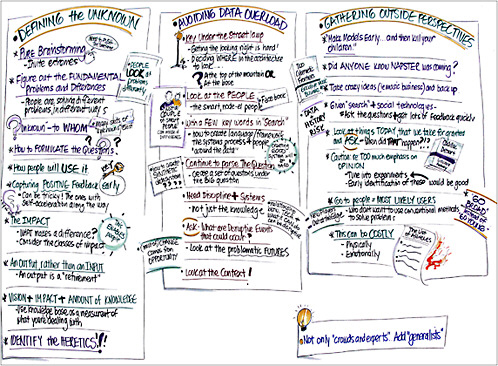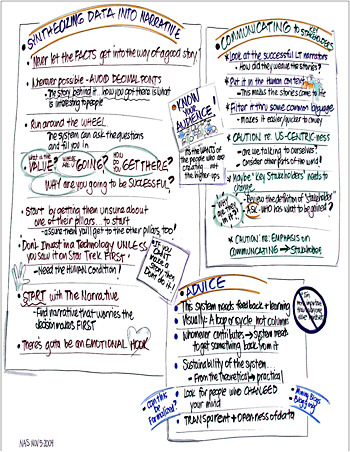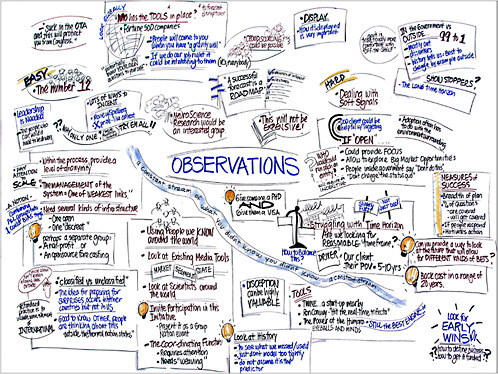Appendix F
Visualizations of Workshop Discussions
During the Forecasting Future Disruptive Technologies Workshop, Lynn Curruthers, a visual practitioner, assimilated ongoing discussions at two workshop sessions and produced the three graphics presented in Figures F-1 through F-3 and, for ease of viewing, included on the CD provided with this report and in the PDF available at http://www.nap.edu/catalog.php?record_id=12834.
Figures F-1 and F-2 were drawn during the first of the morning sessions, and Figure F-3 was drawn during the summary session. The workshop attendees kept track of the graphics as they were evolving, and offered suggestions and changes to make sure that everything from the session discussions was included.
Figure F-2 is meant to be read as a continuation of Figure F-1. Figure F-3 was produced at the end of the day from the workshop attendees’ overall final observations.







